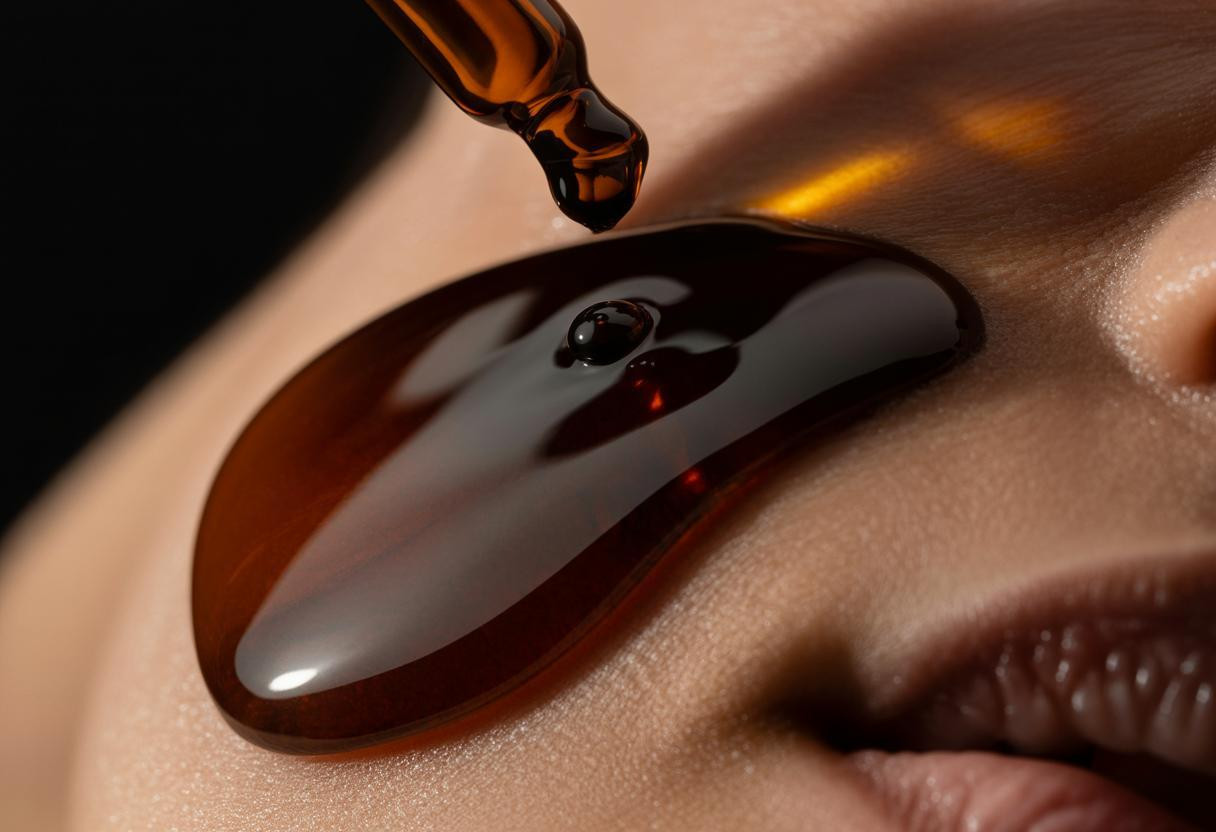The $38.9 billion anti-aging oil industry harbors a shocking secret that most consumers never see coming—mineral residue contamination that can undermine the very benefits these premium products promise to deliver. Recent industrial investigations reveal that up to 15% of botanical oils used in anti-aging formulations contain trace mineral oil hydrocarbons, transforming your luxurious skincare routine into an unexpected chemical exposure.
The hidden contamination crisis in premium skincare
Mineral oil contamination represents one of the most pervasive yet invisible threats in the anti-aging oil market. Unlike intentional ingredients, these petroleum-derived substances infiltrate products through machinery lubricants, processing aids, and packaging materials during manufacturing.
The irony cuts deep: consumers pay premium prices for “pure” botanical extracts while unknowingly applying industrial byproducts to their skin. This contamination mirrors broader product safety concerns, similar to undisclosed risks hidden in everyday consumer products that compromise user safety.
Industry experts estimate that shared manufacturing equipment contributes to 60% of cross-contamination incidents, particularly when facilities process both food-grade and cosmetic oils using the same machinery.
Three shocking pathways mineral residues enter your skincare
Equipment cross-contamination during extraction
High-heat refining operations create the perfect storm for contamination. Machinery lubricants and release agents transfer residues directly into botanical extracts during processing. Aromatic hydrocarbons in mineral oils promote oxidative reactions that bind contaminants permanently to your precious anti-aging oils.
Cold-pressed oils face lower contamination risks, but solvent-extracted varieties show concerning residue levels when manufacturers skip expensive purification steps.
Environmental migration from atmospheric sources
Hydrocarbon deposits settle on agricultural crops and processing equipment before extraction even begins. This pathway affects organic products just as severely as conventional ones, challenging the “clean beauty” narrative many brands promote.
Packaging material interactions
Mineral oil-based printing inks and plastic additives leach into oils during storage. Glass containers eliminate this risk entirely, explaining why premium brands increasingly choose expensive glass packaging over cheaper plastic alternatives.
The surprising health implications nobody discusses
Research reveals that lipophilic mineral residues penetrate the stratum corneum and accumulate in skin tissue over time. Unlike water-based contaminants that wash away, these petroleum derivatives embed in your skin’s lipid barrier, potentially disrupting natural renewal processes.
The bioaccumulation pattern resembles PFAS contamination, where repeated exposure creates cumulative effects. While no definitive studies link mineral oil residues to specific skin disorders, the parallel raises legitimate concerns about long-term dermal health impacts.
Counterintuitively, expensive anti-aging oils may carry higher contamination risks than basic moisturizers because complex botanical extraction processes involve more potential contamination points. Just as repeated oil heating creates inflammatory compounds, multiple processing steps increase residue accumulation.
How to identify and avoid contaminated products
Packaging clues that reveal quality
Glass bottles with minimal labeling often indicate manufacturers who prioritize product purity over marketing flash. Brands using expensive glass packaging typically invest in cleaner extraction methods too.
Certification standards that matter
Look for NSF International or USDA Organic certifications that require residue testing. Generic “natural” claims offer zero contamination protection, while certified organic standards mandate regular analytical testing for petroleum-derived contaminants.
Production method transparency
Brands that specify “supercritical CO2 extraction” or “cold-pressed only” eliminate solvent-related contamination risks entirely. Companies hiding their extraction methods behind vague “proprietary processes” often use cheaper, contamination-prone techniques.
The future of clean anti-aging oil production
Industry insiders predict dedicated manufacturing facilities will become the gold standard by 2026, eliminating cross-contamination from shared equipment. Advanced filtration using Fuller’s Earth clay shows promise for removing existing residues, while synthetic alternatives offer contamination-free formulations.
Consumer awareness drives this transformation, just as quality oil experiences demonstrate the difference between premium and contaminated products. The anti-aging oil industry stands at a crossroads where transparency and purity will separate market leaders from pretenders.
Your skin deserves the pure botanical benefits you’re paying for—not the hidden industrial residues that compromise both safety and efficacy. Choose wisely, because true anti-aging begins with truly clean ingredients.
